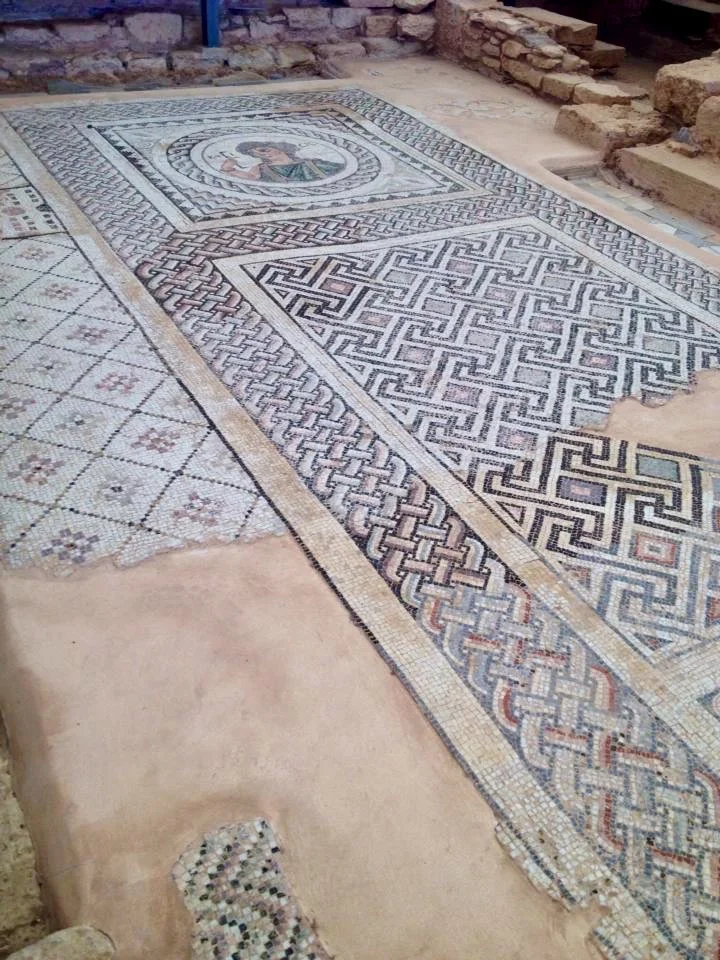WHAT TO SEE WHEN YOU HAVE 3 DAYS in cyprus
The Republic of Cyprus is an island country located in the eastern side of the Mediterranean Sea and is part of the European Union. Cyprus is a major tourist destination in the area due to its rich history, clear-blue sea and beautiful beaches. It is also the third largest and third most populous island in the Mediterranean. Neighbouring countries include Turkey to the north, Syria and Lebanon to the east, Israel and Palestine to the northwest, Egypt to the south and Greece to the northeast. The capital of Cyprus is Nicosia, which is further north of the island.
We flew into Larnaca Airport and based ourselves in Limassol, the second largest city in the country after Nicosia. Limassol is a well-known city resort. Located on the southern coast of Cyprus, Limassol is home to several ancient castles and ruins, as well as white-sand beaches and clear-blue oceans. I recommend that you spend one day sightseeing in the centre of Limassol and put aside another full day visiting the archaeological sites of Amathus and Kurion, which are located outside the city as well as a few historical beaches along the coast.
Although Cyprus Republic has “de jure sovereignty” or expressed and institutionally recognised right over the island together with its territorial sea and exclusive economic area, the republic is in fact de facto partitioned into two main parts. About 59% of the island’s area in the south and west is under effective control of the Republic of Cyprus and around 36% in the north area is administered by the self-declared Turkish Republic of Northern Cyprus. This occupation is still considered illegal under international law. The remaining 4% of the island’s area is occupied by the UN buffer zone.
Cyprus has a long history of foreign occupations. There is evidence that human hunter gathering activity started on the south coast from around 10000 BC and settled village communities from 8200 BC. It also experienced two waves of Greek Settlement during the late Bronze Age: the Mycenaean Greek Traders around 1400BC and Greek immigrants following the collapse of Bronze Age from 1100 to 1050 BC. This led to the island’s predominantly Greek character. Furthermore, Cyprus is home to an integral part of Greek mythology as it is the birthplace of Aphrodite and Adonis, as well as home to Greek Kings such as Cinyras, Teucer and Pygmalion. In early 8th century BC, Phoenician colonies were established in the south. Alexander the Great ruled Cyprus in 333 BC and upon his death, the island became part of Hellenistic Empire of Ptolemaic Egypt. In 58 BC, the island was taken over by the Roman Republic. During the Middle Ages, Cyprus continued to witness several occupations. In 395, it became part of Byzantine Empire, or East Roman, as well as the Muslim armies in 649, until the Crusades came along during the 12th century and Richard I of England took over from Isaac Komnenos of Cyprus.
In 1473, upon James II’s death, the Republic of Venice ruled Cyprus with Queen Catherne Cornaro as figurehead. Venice annexed Cyprus in 1489 and fortified the city of Nicosia by constructing the Walls of Nicosia and used the city as an important commercial hub. The Ottomans raided Cyprus several times during this time and destroyed many of the island’s ancient cities. By 1570, the island became part of its empire. The Ottomans established the millet system, where non-Muslims were governed by their own religious authorities. The head of the Church of Cyprus was invested as leader of Greek Cypriot to ensure the end of the Roman Catholic influence. During Ottoman rule, Cyprus began 250 years of economic decline. The Greek War of Independence in 1821 witnessed many Greek Cypriots joining Greek forces, which was banned by the Ottoman Governor. In 1828, Greece called for a union between Cyprus and Greece, resulting to several uprisings by both Turkish and Greek Cypriots. British Empire de facto took over the island’s administration in 1878, but remained a de jure Ottoman control until 1914 when they formally annexed Cyprus and declared the Ottoman Khedivate of Egypt and Sudan a Sultanate and British protectorate. In 1960, Cyprus gained independence during the Zurich and London Agreement between the UK, Greece and Turkey. In 1964, Turkey unsuccessfully tried to invade Cyprus. In 1974, the island witnessed another Turkish invasion, where they seize control of 36% of the island and continues until today. The last reunification talks between the North and South took place in May 2015.
The population of Cyprus is estimated to be over 1.1 million people, of which around 300,000 live in the northern part of Turkish occupation. Republic of Cyprus is also home to over 110,000 foreign residents. It is divided into six districts: Nicosia (the capital), Farmagusta, Kyrenia, Larnaca, Limassol and Paphos. The villages of Potamia in Nicosia and Pyla in Larnaca are the only areas in the republic with a mixture of Greek and Turkish Cypriots.
Airports:
Larnaca International Airport and Paphos International Airport.
Recommended Airlines:
From UK: Easyjet, Aegean, Monarch and British.
From Others: most major international flights go to Athens International Airport.
Recommended Hotels in Limassol:
Crowne Plaza, Amathus Beach, Parklane, Four Seasons, Royal Appolonia and Alasia.
Public Transportation:
Buses and Taxis.
Recommended Restaurants in Limassol:
Danae Tavern, Ocean Basket, Forsos Tavern, Limassol Marina, Avli Tou Vasilea, Fat Fish, Hobo Mediterraneo, Artima, Pixia and Meze Taverna.
Places . . .
Recommended Places To Go . . .
Featured . . .







